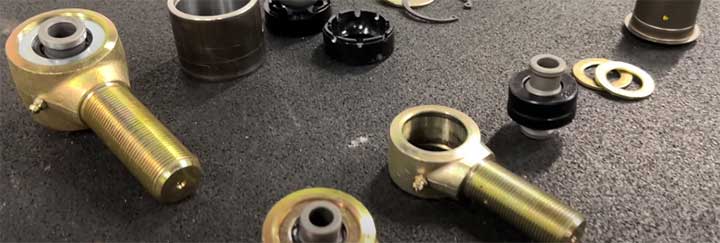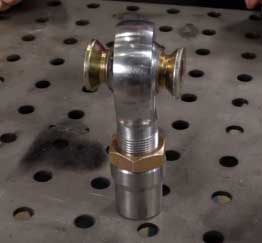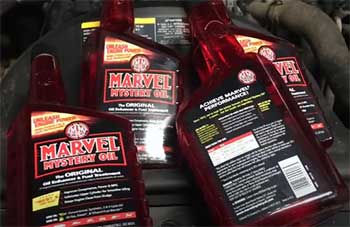In the rugged realm of off-road suspension parts, two heavyweights rule the ring: Johnny Joints and Heim Joints. These power players both possess unique strengths and weaknesses, but which one wins the battle for supremacy?
Let’s dive into the nitty-gritty of their features, benefits, drawbacks, and frequently asked questions to help you make the right choice.
A Brief Comparison Table
| Feature | Johnny Joint | Heim Joint |
| Design and Structure | High-density urethane bushing encased in a robust steel shell | Spherical bearing in a metal casing |
| Durability and Lifespan | Superior durability, long lifespan with regular maintenance | High load capacity but vulnerable to environmental wear |
| Noise and Comfort | Reduced noise and enhanced comfort due to shock absorption | More noise due to metal-on-metal design |
| Price | Tend to be pricier due to intricate design and quality materials | More cost-effective |
| Maintenance | Requires regular cleaning and lubrication | Requires less maintenance due to simpler design |
The Ins and Outs of Johnny Joints

A Johnny Joint, an ingenious invention from Currie Enterprises, is a type of rod end that’s essentially an evolution of traditional bushings. If you’re in need of a joint that’s both durable and provides smooth operation even in the harshest environments, then this is it.
The critical selling point for Johnny Joints is their patented design, which includes a high-density urethane bushing encased within a robust steel shell. This structure guarantees flexibility in multiple axes, reduced noise, and a higher degree of shock absorption compared to the traditional spherical rod end design of a Heim joint.
The Johnny Joint’s encapsulated design allows it to withstand grueling conditions without excessive wear. This is a joint that’s been crafted for those serious about performance.
However, remember that even though Johnny Joints are renowned for their durability, they require regular maintenance to keep them operating at their best.
Understanding Heim Joints
Heim Joints, also known as spherical rod ends, were first developed for aircraft control linkages and have since found a wide range of applications, including off-roading.

Their construction is simple and elegant: a spherical bearing housed within a metal casing, offering high load capacity and low friction.
This minimalistic design allows Heim joints to deliver precise movement and rotation in three axes, making them a top choice for applications requiring absolute precision.
Yet, everything comes with a price.
The very feature that makes Heim joints so effective – their metal-on-metal construction – also contributes to their downfall in certain conditions. These joints are vulnerable to dust, grit, and water ingress, which can cause rapid wear and decreased lifespan.
Thus, despite their impressive precision and articulation, Heim joints might demand frequent replacements in demanding off-road environments.
Weighing Up: Pros and Cons
When it comes to choosing between Johnny Joints and Heim Joints, it’s not so much about which is better overall, but rather which is better for your specific needs.
Pros of Johnny Joints
- Superior Durability: Thanks to their robust design, Johnny Joints can handle extreme conditions, lasting longer than many other types of joints.
- Shock Absorption: The inclusion of a urethane bushing helps dampen shocks and vibrations, increasing comfort during off-road adventures.
- Reduced Noise: The bushing also helps minimize operational noise, which can contribute to a quieter ride compared to Heim joints.
Cons of Johnny Joints
- Requires Regular Maintenance: To maintain their high performance, Johnny Joints need regular cleaning and lubrication.
- Costly: They tend to be pricier than Heim joints due to their intricate design and the quality of materials used.
Pros of Heim Joints
- Precise Movement: The metal-on-metal design offers impressive articulation and precise rotational movement.
- High Load Capacity: Heim joints are capable of handling high loads, making them suitable for heavy-duty applications.
Cons of Heim Joints
- Susceptible to Wear: The exposed design leaves them vulnerable to dirt and water, causing rapid wear and potentially shorter lifespan.
- Noise Generation: Due to the metal-on-metal contact, Heim joints can be a bit noisy, especially when worn out.
Key Differences Between Johnny Joints and Heim Joints
Understanding the key differences between Johnny Joints and Heim Joints can help you make an informed decision when choosing the best solution for your off-road vehicle.
In this detailed analysis, we’ll unpack these distinctions to provide you with a clear comparison.
- Design and Structure
First and foremost, the fundamental difference between these two joints lies in their design and construction.
Johnny Joints feature a distinctive, patented design that is essentially an upgrade on traditional bushings. They consist of a high-density urethane bushing encased within a robust steel shell, enabling flexibility in multiple axes.
This special construction allows Johnny Joints to provide smooth, quiet operation under severe conditions, with superior shock absorption and reduced noise.
On the other hand, Heim Joints, also known as spherical rod ends, adopt a more simplistic design. They’re made of a spherical inner bearing held within a metal casing.
This minimalistic construction allows Heim Joints to offer precise movement and rotation, making them a preferred choice for applications that demand a high level of accuracy.
- Durability and Lifespan
Another significant area of difference lies in the durability and lifespan of these joints.
The encapsulated design of Johnny Joints allows them to withstand harsh conditions without substantial wear, giving them an edge in durability. They can handle a beating and continue to perform smoothly, making them a good option for severe off-road situations.
However, their extended lifespan comes with the requirement of regular maintenance.
Heim Joints, while robust and capable of carrying high loads, are more susceptible to environmental damage. Their exposed design makes them vulnerable to dust, grit, and water, which can cause rapid wear and lead to a shorter lifespan.
Therefore, even though Heim joints provide excellent precision and articulation, they might require frequent replacements in harsh environments.
- Noise and Comfort
The operational noise and comfort levels provided by these two types of joints differ considerably.
Thanks to the urethane bushing within the Johnny Joint, it can absorb shocks and vibrations effectively, providing a quieter and more comfortable ride compared to Heim Joints. The bushing helps reduce metal-on-metal contact, which directly contributes to a quieter operation.
In contrast, Heim Joints, due to their metal-on-metal design, can be somewhat noisier. While this might not be a deal-breaker for some off-road enthusiasts, it’s an important factor to consider for those seeking a quieter ride.
- Price Point
Johnny Joints tend to be pricier than Heim Joints. This is due to their unique design, the high-quality materials used, and the added durability they provide.
If you’re operating on a tight budget and don’t mind making more frequent replacements, Heim joints might be a more suitable, cost-effective option.
- Maintenance
Johnny Joints require regular cleaning and lubrication to maintain their performance levels, which can be a significant consideration for many users. While Heim joints also require maintenance, it is often less involved than that required by Johnny Joints due to their simpler design.
Also Read: Comparison of MOOG And TTX Ball Joints.
FAQ Section
The main disadvantages of Heim joints are their susceptibility to wear and tear due to exposure to environmental factors like dust and water. They also tend to produce more operational noise compared to Johnny Joints.
A Johnny Joint is a type of rod end designed by Currie Enterprises. It features a unique design with a high-density urethane bushing encased within a steel shell. This design offers enhanced durability, reduced noise, and improved shock absorption.
Johnny Joints are produced by Currie Enterprises, a company with a long-standing reputation for quality and innovation in off-road components.
A Heim joint is also commonly referred to as a spherical rod end.
Final Thoughts
In the end, choosing between Johnny Joints and Heim Joints is about matching the right tool to your specific off-road needs. Both offer unique advantages and disadvantages. Prioritize durability, noise reduction, and shock absorption.
Johnny Joints might be your pick. Value precision, high load capacity, and don’t mind regular replacements? Heim joints could be the way to go. Whatever your choice, happy off-roading!

